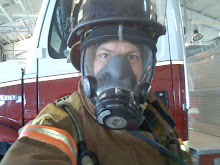 Magnaflux Spotcheck is a product that I learned about at work. It is a method of nondestructive testing of metallic objects for surface defects (such as cracks). Since I own overhead lifting equipment I felt the need to aquire the tools nessasary for OSHA-mandated safety checks (even though I am not governed by OSHA, since I don't have any employees). That and this test kit has many other uses...
Magnaflux Spotcheck is a product that I learned about at work. It is a method of nondestructive testing of metallic objects for surface defects (such as cracks). Since I own overhead lifting equipment I felt the need to aquire the tools nessasary for OSHA-mandated safety checks (even though I am not governed by OSHA, since I don't have any employees). That and this test kit has many other uses...In essence Spotcheck is a 5-step process involving three chemicals: A solvent-based cleaner, a penetrant and a developer. The solvent cleaner is just that, a solvent. Before purchasing the materials I did my research and discovered that the Magnaflux brand cleaner/remover is nothing but petroleum napthata, which is far more inexpensively available as Zippo lighter fuel, hence the yellow bottle of Ronsonol at the top of the kit.
At the heart of the kit is the Magnaflux Penetrant Dye (the right aerosol can). In essence it is nothing more than a mixture of a blood red dye and the most powerful penetrating oil that money can buy. This mixture is sprayed on the test part, allowed to soak and then wiped off with a rag soaked in solvent to remove any penetrant left on the sufrace.
After this the developer is applied. Basically the developer is merely talcum powder suspended in a powerful solvent (yes just talcum powder, or even finely ground clay, works, just not as well). When sprayed on the cleaned test part it draws the penetrant out of any defects, and the red dye stains the talc. This readily shows any defects in the test part.
I purchased the supplies to assemble this kit for less than half of the cost of the ready-made kit (which includes a can of penetrant, a can of developer, two cans of cleaner/remover, a penetrant marker, a shop rag and a case). The only part that I wish I had was the penetrant pen, other than that the rest of the kit wasn't worth the extra money...
Below is a demonstration of Spotcheck on a known surface discontinuity; where a flat-head bolt meets a plate. The results of this test were not as expected, I will explain below.

Penetrant (the blood-red stain) applied to the test part. I allowed about five minutes for the penetrant to work before the next step.

Surface penetrant removed with a rag soaked with Berryman's B-12 Chemtool. Notice the penetrant left in the "socket" of the allen-head screw working it's way up to the head of the bolt...

Developer applied and allowed to sit for five minutes. The developer applied to bare metal is titanium white; the pinkish color is due to the penetrant contained in the surface rust being pulled back up to the surface. Ideally the bolt should have been surrounded by a red ring, my guess is the lack of a ring is most likely due to both misapplication of the developer and the excessive amount of PB Blaster that I had soaked the bolt with prior to this test (and more likely than not didn't fully remove prior to the test). The entire head of the bolt is highlighted only by the penetrant seen seeping up from the socket as seen in the previous photo.
I want to redo this demonstration at a later date on another known discontinuity, at which point I will revisit this post...




